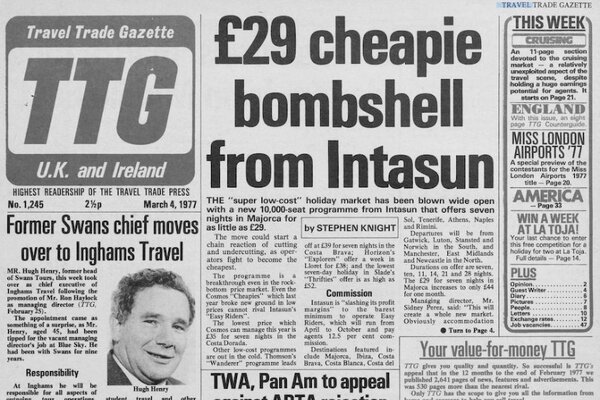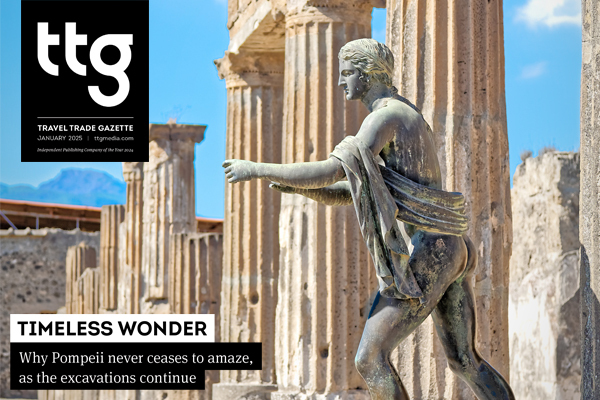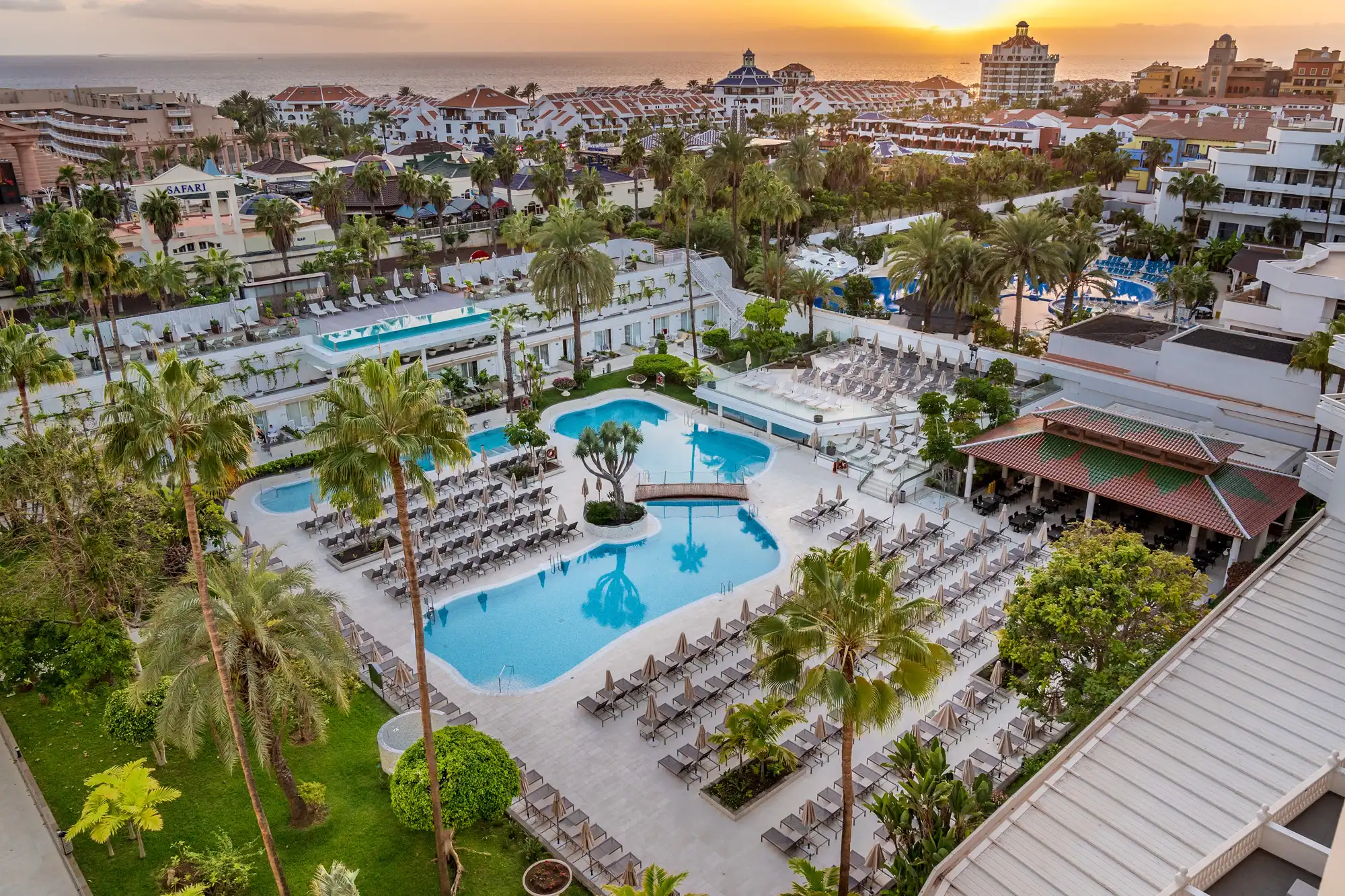TTG at 70: The 'big bang' that made travel affordable for all
 Gary Noakes
Gary NoakesIn our 70th anniversary year, TTG is looking back at some of the biggest stories in the history of the modern travel industry, and the effect these key moments have had on the sector as we know it today. This month, we go back to the 1970s – the decade that shaped travel as we know it today.
The 1970s did more to shape travel as we know it than perhaps any other decade – the boom in package travel meant brochures were replete with artists’ impressions of hotels springing up on the Costas.
The start of the decade also saw headlines warn of a capacity glut, particularly in Spain, with one operator predicting: “It seems obvious tour firms have over-reached themselves in estimating the growth of the air holiday market this year.”
In one instance, around 200,000 holidaymakers were at the mercy of operators switching flights, hotels and even resorts to stem over-capacity. Later in the decade, in Greece, enthusiastic charter airlines sold more seats than there were hotel rooms.
The decade also saw the establishment of bonding via the Tour Operators’ Study Group (TOSG), protecting two million clients via a guarantee equal to 5% of turnover. Later, the CAA began to oversee a bonding scheme as part of Atol, with the first licences issued in 1973.
Incredibly, minimum price controls were still in place for package tours, but these were abolished for most winter holidays – excluding ski. Industry luminary Sidney Perez forecast holiday prices would fall through year-round utilisation of aircraft. “This opens up an entirely new market for people who have never been abroad before,” he said.
The CAA then gave the all-clear to budget breaks with “nominal accommodation without any pre-booking conditions or minimum price restrictions”, axing minimum fares and 30-day advance booking requirements. Harry Goodman’s Intasun offered 10,000 £29 Majorca packages – £150 today – described by one rival as “an act of desperation”. As the decade turned, Goodman went on to offer a fortnight’s half-board in Miami from an unprecedented £260 (now £983).
The decade was also the one that saw the Boeing 747 make its mark. The revolutionary 400-seat jet slashed costs, with Qantas bringing it to London in 1971, while BOAC used the aircraft’s downtime to operate it to Palma on behalf of agency chain Lunn Poly.
Freddie Laker emerged as a low-cost long-haul pioneer, purchasing two 345- seat DC-10 aircraft in 1972, serving his ambition to launch SkyTrain no-frills flights to North America with £37.50 one- way fares (£386 today). But opposition from the UK government and other airlines meant it was to be 1977 before his dream was realised.
Another transatlantic boost came when the US government relaxed a rule that stipulated inclusive tour firms must be 75% US-owned, while Iata agreed to a 28% reduction in North Atlantic air fares from 1972. British Caledonian applied to operate scheduled services to the US from four UK points, increasing competition.
Another issue was surcharging, with the TOSG urging operators to publish rates of exchange on which holidays were priced. To alleviate the issue, big operators had to apply to the Bank of England to buy currency ahead, something rudimentary these days.
The decade also saw the merger of state-owned BEA and BOAC to create British Airways. In 1977, BA was accused of trying to destroy the package market by cutting European fares, with Corfu reduced, in today’s terms, from £792 to £429.
The decade ended with signs the European Union was about to scrap EU-wide bilateral restrictions on European airlines, something that was to have yet more liberating effects on travel.
What did it all mean?
The 1970s were perhaps the industry’s “big bang” when mass travel really became a possibility. Governments, particularly in the UK, realised trying to protect state-owned airlines by keeping fares artificially high was a losing game. At the same time, destinations discovered the money to be made and a building boom began, while new jet types slashed per-seat costs.
Harry Goodman’s Intasun – for better or worse – showed the industry how to grow volume by slashing margins, making dream holidays affordable to ordinary people. The 70s was the decade the Atol system came into play, protecting consumers who booked long in advance. TOSG, which later became the Federation of Tour Operators, followed its work on bonding with health and safety initiatives still the benchmark today.
It was all revolutionary stuff, but as the decade drew to a close, officials in Brussels began talks on tearing up yet more red tape hampering the growth of travel. But that’s a story for April.
TTG at 70: Opening up the archives
During our 70th anniversary year (2023), TTG charted the history of the travel industry through a series of special features delving into the magazine's 70-year back catalogue, all of which is archived on the TTG Media website. Here is the story so far:
- How travel took on the Covid crisis – and won
- The long journey to package holiday perfection
- How travel agents have stood the test of time
- The extraordinary rise of the cruise industry
- Aviation's highs and lows through the ages
- The ash cloud, the rise of cruise – and the death of an institution
- How – and why – terror changed travel forever
- The 90s – the decade that just about saw it all
- How travel's boom-bust nature came to be
- The 'big bang' that made travel affordable for all
- All hail the package in the Swinging Sixties
- The rise of mass travel, and where it all began
Sign up for weekday travel news and analysis straight to your inbox

Gary Noakes
Supplier Directory
Find contacts for 260+ travel suppliers. Type name, company or destination.








